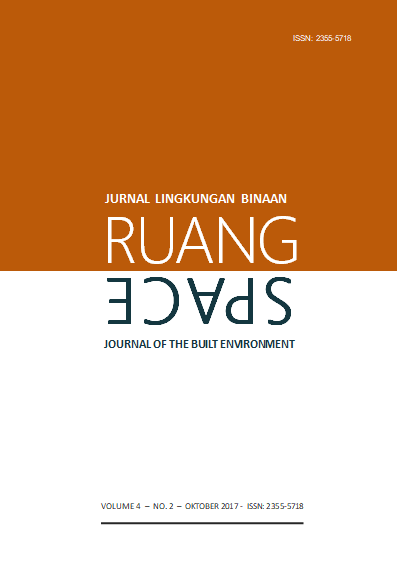Place Attachment pada Kawasan Komersial di Jalan Danau Tamblingan, Sanur
Abstract
Commercial buildings nowadays are not merely functioned as places for buying and selling products and/or services. However, they also provide spaces for socializing, as well as recreational purposes. Fact shows that visitors have a tendency to spend times regularly at places that are not only able to accommodate their needs but also have the capacity to generate emotional ties between them and these places they are in (place attachment). The goal of this study is to identify as to how a sense of place attachment emerges between Jalan Danau Tamblingan-Sanur Corridor and visitors who visited public spaces and commercial buildings located along this corridor. It applies quantitative research metode accompanied with various deskriptive explanations. Data was collected by distributing questionnaires to 100 visitors who were selected using an accidental sampling technique. Research findings show that a place attachment in Jalan Danau Tamblingan Corridor reaches the highest level of 60% and the lowest of 40%. This statistic has been influenced by both physical and social factors, which are listed respectively from the highest to the lowest, as follows: built environment with a variant of 35, 912 %; natural environment with a varian of 11,249 %; social factor with a variant of 10, 134 %; and social symbols with a variant of 8,338%.Keywords: place attachment, commercial buildings, Jalan Danu Tamblingan, Sanur
Downloads
The copyright of the received article shall be assigned to the journal as the publisher of the journal. The intended copyright includes the right to publish the article in various forms (including reprints). The journal maintains the publishing rights to the published articles.



